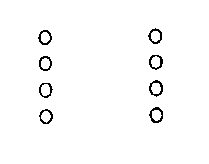Une partie des informations de ce site Web a été fournie par des sources externes. Le gouvernement du Canada n'assume aucune responsabilité concernant la précision, l'actualité ou la fiabilité des informations fournies par les sources externes. Les utilisateurs qui désirent employer cette information devraient consulter directement la source des informations. Le contenu fourni par les sources externes n'est pas assujetti aux exigences sur les langues officielles, la protection des renseignements personnels et l'accessibilité.
L'apparition de différences dans le texte et l'image des Revendications et de l'Abrégé dépend du moment auquel le document est publié. Les textes des Revendications et de l'Abrégé sont affichés :
| (12) Brevet: | (11) CA 2161756 |
|---|---|
| (54) Titre français: | SEPARATEUR A TUBES, A FONCTIONNEMENT PAR GRAVITE, SERVANT A SEPARER DIFFERENTS TYPES DE MELANGES DE MATIERES PLASTIQUES |
| (54) Titre anglais: | TUBE-TYPE GRAVITY SEPARATOR FOR SEPARATING MIXTURES OF DIFFERENT KINDS OF PLASTIC MATERIALS |
| Statut: | Durée expirée - au-delà du délai suivant l'octroi |
| (51) Classification internationale des brevets (CIB): |
|
|---|---|
| (72) Inventeurs : |
|
| (73) Titulaires : |
|
| (71) Demandeurs : |
|
| (74) Agent: | GOWLING WLG (CANADA) LLP |
| (74) Co-agent: | |
| (45) Délivré: | 1998-12-08 |
| (22) Date de dépôt: | 1995-10-30 |
| (41) Mise à la disponibilité du public: | 1996-04-30 |
| Requête d'examen: | 1995-10-30 |
| Licence disponible: | S.O. |
| Cédé au domaine public: | S.O. |
| (25) Langue des documents déposés: | Anglais |
| Traité de coopération en matière de brevets (PCT): | Non |
|---|
| (30) Données de priorité de la demande: | ||||||
|---|---|---|---|---|---|---|
|
Séparateur par gravité équipé de tubes, servant à trier des mélanges de matières au moyen d'un procédé électrostatique. Les tubes sont décalés les uns par rapport aux autres, ce qui permet d'obtenir une meilleure séparation et, par conséquent, un produit à haut niveau de pureté.
In a tube-type gravity separator used to electrostatically separate mixtures, the
tubes are arranged in an offset configuration in relation to each other, therebyachieving a better separation effect and higher product purity.
Note : Les revendications sont présentées dans la langue officielle dans laquelle elles ont été soumises.
Note : Les descriptions sont présentées dans la langue officielle dans laquelle elles ont été soumises.

2024-08-01 : Dans le cadre de la transition vers les Brevets de nouvelle génération (BNG), la base de données sur les brevets canadiens (BDBC) contient désormais un Historique d'événement plus détaillé, qui reproduit le Journal des événements de notre nouvelle solution interne.
Veuillez noter que les événements débutant par « Inactive : » se réfèrent à des événements qui ne sont plus utilisés dans notre nouvelle solution interne.
Pour une meilleure compréhension de l'état de la demande ou brevet qui figure sur cette page, la rubrique Mise en garde , et les descriptions de Brevet , Historique d'événement , Taxes périodiques et Historique des paiements devraient être consultées.
| Description | Date |
|---|---|
| Inactive : Périmé (brevet - nouvelle loi) | 2015-10-30 |
| Inactive : CIB de MCD | 2006-03-12 |
| Accordé par délivrance | 1998-12-08 |
| Inactive : Taxe finale reçue | 1998-05-22 |
| Préoctroi | 1998-05-22 |
| Un avis d'acceptation est envoyé | 1998-04-28 |
| Un avis d'acceptation est envoyé | 1998-04-28 |
| Lettre envoyée | 1998-04-28 |
| Inactive : Renseign. sur l'état - Complets dès date d'ent. journ. | 1998-04-22 |
| Inactive : Dem. traitée sur TS dès date d'ent. journal | 1998-04-22 |
| Inactive : Approuvée aux fins d'acceptation (AFA) | 1998-03-17 |
| Demande publiée (accessible au public) | 1996-04-30 |
| Exigences pour une requête d'examen - jugée conforme | 1995-10-30 |
| Toutes les exigences pour l'examen - jugée conforme | 1995-10-30 |
Il n'y a pas d'historique d'abandonnement
Le dernier paiement a été reçu le 1998-09-28
Avis : Si le paiement en totalité n'a pas été reçu au plus tard à la date indiquée, une taxe supplémentaire peut être imposée, soit une des taxes suivantes :
Les taxes sur les brevets sont ajustées au 1er janvier de chaque année. Les montants ci-dessus sont les montants actuels s'ils sont reçus au plus tard le 31 décembre de l'année en cours.
Veuillez vous référer à la page web des
taxes sur les brevets
de l'OPIC pour voir tous les montants actuels des taxes.
Les titulaires actuels et antérieures au dossier sont affichés en ordre alphabétique.
| Titulaires actuels au dossier |
|---|
| KALI UND SALZ GMBH |
| Titulaires antérieures au dossier |
|---|
| INGO STAHL |
| NORBERT RASCHKA |